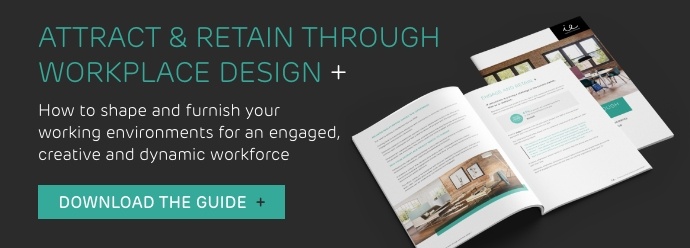The idea of a four-day week has been a topic of great discussion over the last few years. It’s gained traction as a solution to address burnout, work-life balance and productivity concerns.
Proponents argue that it could increase productivity, improve employee mental health, and reduce absenteeism. It could help companies attract and retain talent, improve work satisfaction, and reduce environmental impact by cutting down on commuting. Yet sceptics argue a four-day week could result in reduced wages, difficulties coordinating schedules, and potential decreases in productivity if not managed properly.
Now, a new report has revealed the full findings of the world’s largest four-day week trial to date. Sixty-one companies and around 2,900 workers in the UK took part in the trial from June to December 2022.
Overall, the trial has been a resounding success:
92% of companies participating in the four-day week trial have decided to continue the four-day week after the pilot.
Joe Ryle, Director of the four-day week campaign, says:
“This is a major breakthrough moment for the movement towards a four-day working week. Across a wide variety of different sectors of the economy, these incredible results show that the four-day week with no loss of pay really works. Surely the time has now come to begin rolling it out across the country.”
Key findings from the four-day week trial
The trial revealed a four-day week to offer a wide range of benefits for both employees and employers.
Improved employee wellbeing
39% of employees reported being less stressed, and 71% had reduced levels of burnout at the end of the trial. 46% of employees reported a reduction in fatigue, and 40% saw a reduction in sleep difficulties.
Improved work-life balance
62% reported it easier to combine work with their social life. 60% reported an increased ability to combine work with care responsibilities. For parents with young children, an additional day off was highly valued because it enabled savings on childcare expenses. And 54% reported it was easier to balance work with household jobs. When staff were asked what they had been doing on their additional day off, the most common answer was ‘life admin’.
Increased job satisfaction
48% of employees reported being more satisfied with their job after the trial.

Improved work culture
Several staff members reported positive changes in their work culture. They felt more energised, valued by their employer, proud to work for a company doing something novel, and enjoyed conversations with colleagues about their days off.
Improved life satisfaction
As a result of the four-day week, employees also reported that their life satisfaction had improved. When asked at the beginning of the trial how satisfied they were with their lives, participants responded with an average of 6.69 out of 10. After the trial, this rose to 7.56.
Increased revenue
Revenue stayed broadly the same over the trial period, rising by 1.4% on average. Compared to a similar period from previous years, organisations reported annual revenue increases of 35% on average.
Improved staff retention
The number of staff leaving participating companies dropped by 57% over the trial period.
Reduced absenteeism
Absenteeism was reduced by 65% during the trial period compared to a similar period in previous years.
What a four-day week could look like
There is no one-size-fits-all approach to a four-day week. Companies taking part in the trial developed a range of models including:
- Fifth day stoppage - A classic ‘Fridays off’ model where the company shuts down operations for one day per week. This is a popular choice for companies where staff collaboration is more important than five-day coverage.
- Staggered - Staff take alternating days off, e.g.some take Mondays off, others take Fridays off. A popular choice for companies where five-day coverage was essential.
- Decentralised - Different departments operate on different work patterns. This could also involve arrangements such as some staff working a four-day equivalent over five shorter days.
The companies taking part also had different levels of protection over the non-working day. Some treated it like a Saturday or Sunday, meaning it was ensured that working on the fifth day was never necessary. Others had formal or informal arrangements that meant staff had to be available for work in certain exceptional circumstances.
What a four-day week could mean for the physical office
If a four-day week is the future, what does it mean for the physical office?
With employees working fewer days per week, it could mean they’ll need more flexibility regarding where they work. This could require employers to redesign their office spaces to accommodate a more mobile and adaptable workforce. It will be increasingly important to have a variety of workspaces available within the workplace to support different modes of work, such as collaboration, focused work, and relaxation.
.jpeg?width=2048&height=1152&name=22-0183191%20(1).jpeg)
However, the impact of a four-day week on the physical office will largely depend on how a company chooses to implement the policy and the extent of hybrid working.
If a company closes operations for one day of the week, there will likely be a higher demand for shared collaborative spaces and individual workstations on the operating days.
In contrast, if they opt for a staggered approach where staff take alternating days off, there may be less need for collaborative spaces or hot desking arrangements. This could even lead to more efficient use of office space and a reduction in real estate costs for the company.
%20(1).jpg?width=3200&height=1800&name=17-0084545%20(1)%20(1).jpg)
Summary
“Taken as a whole, results from the UK trial therefore make clear that the four-day week is ready to take the next step from experimentation to implementation.”
The results of the four-day week trial have been resoundingly positive. Employers have been satisfied with the performance, productivity and the overall experience, while employees have expressed feeling less stressed, having a better work-life balance and greater job satisfaction.
The four-day week is clearly a popular policy for those who work it. It could play a big role in helping companies to attract and retain talent. So will your organisation be implementing it?









